Äänekoski 作者: 来源: 发布时间:2021-10-16
一、所属省或是州,具体位置,人口,面积
It is located in the Central Finland region. The town has a population of 18,871 (31 January 2019) and covers an area of 1,138.39 square kilometres (439.53 sq mi) of which 253.84 km2 (98.01 sq mi) is water. The population density is 21.33 inhabitants per square kilometre (55.2/sq mi).
The municipality is unilingually Finnish and its neighbouring municipalities are Kannonkoski, Konnevesi, Laukaa, Saarijärvi, Uurainen, Vesanto and Viitasaari.
The municipality of Äänekosken maalaiskunta was consolidated to Äänekoski in 1969 and the municipality of Konginkangas in 1993. The municipalities of Sumiainen and Suolahti were consolidated to Äänekoski in 2007.
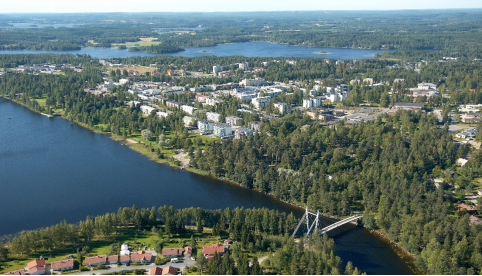
https://www.aanekoski.fi/
https://fi.wikipedia.org/wiki/%C3%84%C3%A4nekoski
https://en.wikipedia.org/wiki/%C3%84%C3%A4nekoski
二、自然地理
1.地理条件
Äänekoski is located on the main road 4 (E75) along approximately 40 kilometers of Jyväskylä in the north. From Hirvaskangas, 12 kilometers from the center of Äänekoski in the direction of Jyväskylä, the main road 69 to Suonenjoki diverges. From Honkola, 6 kilometers from the center of Äänekoski in the direction of Jyväskylä, highway 13 to Kokkola diverges.
There are a total of 13 Natura sites in Äänekoski . These include ridges, lush bird waters and the Hitonhauda gorge.
https://fi.wikipedia.org/wiki/%C3%84%C3%A4nekoski
2.交通情况
The community structure of Äänekoski is strongly based on private car traffic. Highway 4 from Jyväskylä to Äänekoski has been improved in recent years by, among other things, building a motorway north of Jyväskylä, improving the safety of busy intersection areas through structural measures and building bypass lanes. Public transport connections by bus from Äänekoski to Jyväskylä are good. Highway 4 is currently being improved due to a bioproduct factory being built in the area. New road solutions will be built between Äänekoski and Jyväskylä, including a motorway, new 2 + 2 lane roads and new bridges. The project will be completed by 2021.
The agglomerations of Äänekoski and Suolahti are on the Jyväskylä – Haapajärvi line, which currently only serves freight traffic. Passenger traffic on the track was phased out by 1987, when local traffic between Äänekoski and Jyväskylä was stopped. In autumn 2011, the track section from Äänekoski to Saarijärvi was renovated as the first part of the renovation of the entire Haapajärvi line due to its estimated good traffic growth prospects. As the new bioproduct factory increased the amount of freight in the rail network, the rail was renewed and electrified in 2016-2017. The estimated cost of the project was EUR 158 million.
https://fi.wikipedia.org/wiki/%C3%84%C3%A4nekoski
三、经济发展和规模
The companies that paid the most corporate tax in 2016 were Valtra, known as a manufacturer of tractors and agricultural machinery, its parent company AGCO Suomi Oy and Kurikka Timber Oy, which produces blanks for the window industry.
The surplus for the financial year is EUR 0.61 million. euros. The result for the financial year is EUR 6.89 million. euros worse than in 2017. The annual margin is EUR 9.53 million. EUR 2.33 million. EUR less than the change budget. Compared to 2017, the annual margin is EUR 6.63 million. EUR less (-41%).
Tax revenue was EUR 75 million. Compared to 2017, they decreased by approximately EUR 1.6 million. State contributions amounted to EUR 43.2 million. EUR, which is approximately EUR 1.5 million less than last year.
Operating income was MEUR 17.8. EUR (external) and the decrease compared to the previous year was approximately 4.2 million. EUR (-19.2%). Operating expenses were MEUR 128.3. EUR (external) and the decrease compared to the previous year was 0.5 per cent (approximately EUR 0.6 million). Depreciation were about 8.8 million. EUR 0.26 million. euros higher than in 2017. Further depreciation was made on decommissioned construction projects in the amount of EUR 1.9 million.
The city’s income tax rate was 21.50 in 2018. The average income tax rate for municipalities percent in 2018 was 19.86, in Central Finland the corresponding figure was 20.53.
https://fi.wikipedia.org/wiki/%C3%84%C3%A4nekoski
City of Äänekoski. (2019). 2019 Annual Financial Evaluation. https://www.aanekoski.fi/kaupunki/hallinto-ja-talous/talous/talousarvio-ja-tilinpaatos
四、产业特点/重点项目
Äänekoski is known as a strong and traditional industrial place. Industrial activity in Äänekoski began in 1896–1900, when Äänekoski Aktiebolaget established a wood grinder and board factory on Äänekoski. Today, Metsä Board's folding boxboard mill, founded in 1899 and moved to new premises in 1966, Metsä Fiber's sulphate pulp mill, Metsäliitto Cooperative Finnforest's plywood mill, CP Kelco Oy's chemical products factory, Valtra Oy Ab's tractor factory and Valio Oy's production facilities are located in the city. The fine paper mill, founded in 1906 and renovated in 1987, was closed in 2011.
Äänekoski has had an electronics industry since the 1970s. The state-owned Televa started its operations in Äänekoski in 1974 in premises leased from the city and moved to its own premises in 1976. In 1987, the factory became wholly owned by Nokia Corporation. Nokia sold the plant to Scanfil Oy in Sievi in July 2000. In the same year, Nokia also moved its product development unit to new premises in Jyväskylä. Scanfil closed down the Äänekoski plant in September 2007 and transferred production to its other plants.
Metsä Group built the largest investment in the history of the Finnish forest industry in Äänekoski, a bioproduct plant totaling more than 1.2 billion euros. The investment decision for the plant was made in the spring of 2015 and production began at the end of 2017. In addition to pulp, the mill produces various bioproducts, such as tall oil, bioelectricity and wood fuel. Potential new refineries from production by-products include new fiber products, bioplastic raw materials, fertilizers and bio-oil and biogas. The bioproduct mill's pulp production capacity is 1.3 million tons per year. The factory's employment impact is more than 2,500 jobs throughout the value chain. The pulp production capacity of the new mill is 1.3 million tons per year. The plant will increase Finnish exports by an estimated EUR 500 million annually and will increase the nation's renewable energy production by a total of more than two percentage points.
https://en.wikipedia.org/wiki/%C3%84%C3%A4nekoski
五、风景名胜,景点( attractions)
1. Sumiainen Church
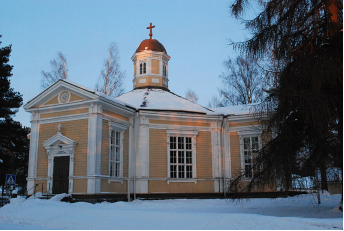
Sumiainen Church is the wooden church of Sumiainen in Äänekoski. The present church was consecrated in 1890 and was designed by Theodor Granstedt. It is an octagonal octagon in shape and corresponds in that respect to the previous wooden church built in 1802. The drawings of the earlier church were written by Anders Malander in 1800.
The central part of the building has short cross arms on three sides and a lower sacristy on the fourth side. The pulpit is made by Johan Kantlin and is from the old church of Sumiainen. The altarpiece painted by the artist Vidolfia von Engeström-Ahrenberg in 1901 is the Ascended Christ is part of the neo-Gothic altar. A separate belfry was built of wood according to the plan of the curator's office in 1851. The wall-hanging rug was woven by sculptor Charlotta M. Lagus in 1881.
The altar clothes as well as the priest's stands and trade fair socks have been designed and manufactured by the Sumy textile artist Riitta Hytönen-Pasanen. The current 15-voice organ was built by Hans Heinrich's organ factory in 1979.
Sumiainen has first belonged to the municipality of Rautalampi and later to Laukaa. Sumiainen seceded as an independent parish in 1906. Independence lasted until 2006, when Sumiainen joined Suolahti. When Suolahti joined Äänekoski in the municipal association in 2007, Sumiainen Church became the chapel of Äänekoski Parish.
https://fi.wikipedia.org/wiki/Sumiaisten_kirkko
2. Lake Keitele
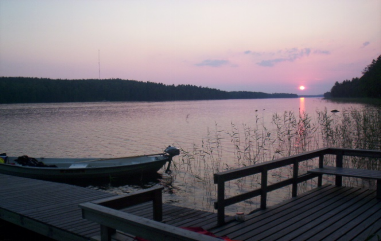
Keitele is a rather large lake located in Central Finland. With the area of 493.59 km² it is the 9th largest lake in the country. The lake is divided into three regions, Ylä-, Keski-, and Ala-Keitele, of which Keski-Keitele is the largest. Water in the lake is clear and in excellent condition. The towns of Äänekoski and Viitasaari are located on the shores of Keitele. The northernmost part of the lake is called Ylä-Keitele. A big part of Ylä-Keitele belongs to Natura 2000 protection program due to its clear water and natural condition.
A leading figure in modern Finnish painting, Akseli Gallen-Kallela first worked at Lake Keitele, in summer 1904. This Lake Keitele landscape is his third and most elaborate depiction of the lake, and he exhibited it in Helsinki that same year. The painting is signed with the Swedish form of the artist's name; in later years he used the Finnish form, as above, by which he is best known today. This painting now hangs in the National Gallery, London. The lake is also mentioned prominently in James Church's 2006 novel A Corpse in the Koryo.
https://www.aanekoski.fi/
3. Suolahti Wanha Station
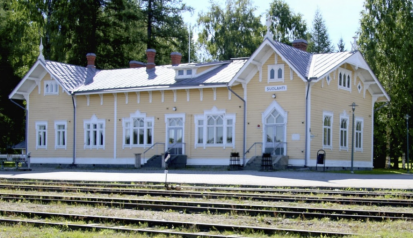
Suolahti Wanha Station and its surroundings are a historically significant area. There, water, road and rail meet. In recent years, Wanhalla Station has hosted events and various art exhibitions as well as performances by various artists. There is also a restaurant in the station building. However, the history of Wanha’s position is a bit of a foreign ground to many.
The planning of the station, which was another hundred years old, began when a decision was made in 1894 to build a railway to Suolahti. Kalle Piilonen from Äänekoski played a major role in the railway project. The station was taken into use when the section between Suolahti and Jyväskylä was completed in 1898. Only a year later, a narrower railway called Süssahti and Äänekoski was completed. Since then, the ram track has been replaced by a wide-gauge connection. The station building, completed in 1898, was designed by Bruno Granholm, who at the time served as the chief architect of the Railway Board. Granholm also designed other stations on the section in question, of which the Suolahti, Laukaa and Jyväskylä station buildings have survived to the present day.
Rudolf Ahonius, who lived with his family in the station building, was the first station manager of the Suolahti station in 1898-1925. The station building of Wanhan Station was expanded in 1904, when it became as it is today. In the same year, general passenger and freight traffic was started on the narrow-gauge line between Suolahti and Äänekoski. For decades, Suolahti's position was the most important hub for water and rail transport in northern Central Finland. There, passengers and goods changed from ship to train and vice versa. The station was also the center of prisoner transportation and there was a tube there at the time. There was also a post office at the station.
https://www.aanekoski.fi/
六、历史文化
1.历史
The independent municipality of Äänekoski was preceded by the secession of the parish from the Laukaa parish: the Äänekoski prayer room was established in 1902. By decision of the Imperial Finnish Senate on March 23, 1906, the Äänekoski parish was established from the beginning of 1907. A new wooden long church was completed in Äänekoski Kirkonmäki in 1906. It was destroyed beyond repair in 1968.
The municipality of Äänekoski was founded in 1911 by separating the northern part of Laukaa municipality and the eastern parts from Saarijärvi municipality into its own municipality. In 1932, the towns of Äänekoski and Suolahti were separated from the municipality, and the name of the then Äänekoski municipality was extended to Äänekoski rural municipality. The township had a population of 3,697 in 1937 and doubled by 1964 (7,619 inhabitants). City rights to Äänekoski were granted in 1973.
https://www.aanekoski.fi/
2. 文化体育
The nationally valuable built cultural environments in Äänekoski include the old railway station of Suolahti, the main room and courtyard of the Riihiaho farm, the Sumiainen church and the entire church village, and the building of the Central Finland College. The church environment of Konginkangas, whose one-armed, wooden cross church was built between 1864 and 1866, is also considered a significant built environment. The church landscape also includes the Konginkangas cemetery, which was inaugurated in 1856, and a grain warehouse, which has been a local history museum since 1956. The wooden building districts of Pukkimäki and Markkamäki are also unified building areas. Pukkimäki with its classic wooden houses is a district built by the Äänekoski Aktiebolaget factory for its workers in 1920–1927, all of which have preserved their original features. The Markkamäki detached house area is an area of one and a half storey wooden detached houses typical of the reconstruction period of the 1940s, which got its name from the nominal redemption price of one mark for plots. The buildings of Klubinmäki, located next to Äänekoski city center, are closely connected with the history and administration of the Äänekoski mills.
Äänekoski's city center is a low, apartment-dominated area. There are no large shopping malls in the city. In 2011, a K-Citymarket measuring approximately 6,500 square meters was completed in the center of Äänekoski. Tall, art-patterned apartment buildings stumble along the entrances to Äänekoski. In the immediate vicinity of the city center there are loosely built detached and terraced parts of the city.
The Äänekoski agglomeration is a modern church building built in 1973, which was completed in 1968 to replace an old church building that was severely damaged by arson. The massive building of the Central National School, completed in 1931, several old residential and office buildings in the factory area, the town hall and city library with works of art, completed in 1986, and the indoor swimming pool, completed in 1996, can be considered significant buildings in the city,
https://fi.wikipedia.org/wiki/%C3%84%C3%A4nekoski
七、其他信息
Äänekoski Huima is a large sports club with a chamber specializing in basketball. On the women’s side, Huima plays basketball in the main series and men in the 2nd division. In addition to Huima, there are several other sports clubs in the area, such as Koiviston Kipinä, Äänekoski Athletes and Suolahti Urho. Suolahti Urho men's hockey team plays in Division II.
The most well-known athletes from Voekoski are javelin throwers Jorma and Kimmo Kinnunen.
https://fi.wikipedia.org/wiki/%C3%84%C3%A4nekoski
八、联系方式
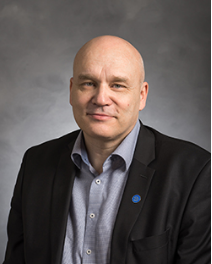
Town Mayor: Matti Tuononen
Phone: 020 632 2000
Email: kirjaamo@aanekoski.fi
https://www.aanekoski.fi/
